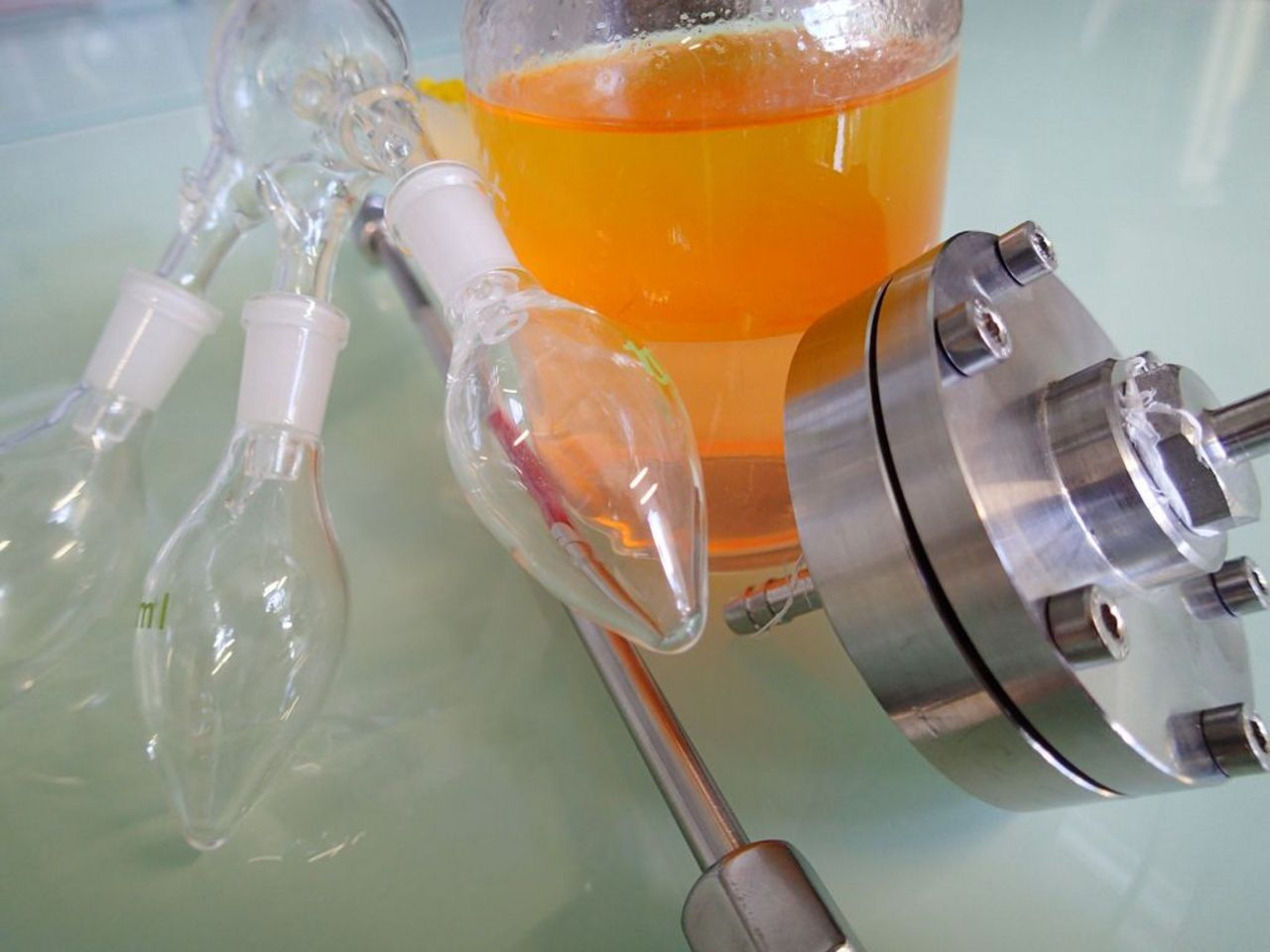Project
Product isolation and purification of conversion products

Investigation and evaluation of methods for the recovery of conversion products from renewable resources
Parallel with process development of chemical and biotechnological conversion of renewable resources, research is indispensable in the field of physical, thermal and chemical separation techniques for the successful purification of the conversion products.
Background and Objective
Depending on the type of the raw material, product properties, production scale and especially the product application we elect methods for product enrichment, product isolation and purification. We develope Both in-situ and ex-situ methods for isolation and purification of conversion products.
Approach
To obtain conversion products from renewable resources, the appropriate choice of methods for efficient downstream processing is essential. The primary purification (e.g., cell harvesting, biomass separation, digestion, clarification) is followed by product enrichment (e.g., evapration, precipitation, extraction, adsorption) as well as product isolation and purification (e.g., chromatography), to obtain after product finishing (e.g., filtration, precipitation) the desired product in the desired degree of purity. Depending on the product application the desired purity degree is essential for the choice of separation techniques for downstream processing.The broth, including the conversion product, of chemical and biotechnological conversion of renewable resources consist up to 80-100% of water. Therefore, we examine the simultaneous reaction and separation of conversion products in the course of process intensification.
Our Research Questions
Efficient and cost-effective methods for the product isolation and purification of the conversion products from renewable resources are developed to yield competitive bio-based chemicals.
Preliminary Results
For the product isolation and purification of conversion products like itaconic acid and 2,3-butanediol from renewable resources, physical, thermal and chemical separation techniques have been applied. Corresponding basic processes such as crystallization, electrodialysis, liquid-liquid extraction and pervaporation were applied, optimized and the conversion products were qualitatively and quantitatively analyzed using up to date analytic techniques.
Duration
Permanent task 7.2013 - 12.2025
More Information
Project status:
ongoing
Publications on the project
- 0
Kuenz A, Hoffmann L, Goy K, Bromann S, Prüße U (2020) High-Level production of succinic acid from crude glycerol by a wild type organism. Catalysts 10(5):470, DOI:10.3390/catal10050470
- 1
Cordes A, Eidt L, Hußmann W, Kuenz A, Prüße U (2020) Schlussbericht zum Vorhaben "Herstellung von Fumarsäure zur Polymeranwendung (FAPA)"; Laufzeit des Vorhabens: 01.04.2016 bis 31.05.2019. Braunschweig: Thünen-Institut, 110 p
- 2
Ciaston M, Cordes A, Krull S, Kuenz A, Oetken J, Prüße U, Storz H, Vorlop K-D (2017) Schlussbericht zum Vorhaben : Thema: Herstellung organischer Säuren für die Polyestersynthese ERA-IB: "Production of Organic Acids for Polyester Synthesis (POAP)" ; Laufzeit: 01.05.2013 bis 31.10.2016. Braunschweig: Johann Heinrich von Thünen-Institut, 103 p
- 3
Kuenz A, Prüße U, Stichnothe H, Bogunovic B, Jurchescu I-M, Lang S, Klingeberg M, Wach W, Micoine K, Saake B (2013) Abschlussbericht zur Vorhaben (ERA-IB); „Herstellung und Veredelung von 2,3-Butandiol aus Biomasse (PUBB)"; Laufzeit des Vorhabens: 01.03.2009 - 31.08.2012, Berichtszeitraum: 01.03.2009 - 31.08.2012. Braunschweig: Thünen-Institut, 100 p
- 4
Kuenz A (2008) Itaconsäureherstellung aus nachwachsenden Rohstoffen als Ersatz für petrochemisch hergestellte Acrylsäure. Braunschweig: Technische Univ, 144 p, Braunschweig, Techn Univ, Diss, 2008

![[Translate to English:] [Translate to English:]](/media/_processed_/3/6/csm_Hintergrund-Ausschnitt1_9daaef6b89.jpeg)
![[Translate to English:] [Translate to English:]](/media/_processed_/3/6/csm_Hintergrund-Ausschnitt1_0bd7111163.jpeg)
![[Translate to English:] Logo des Bundesministerium für Ernährung und Landwirtschaft](/media/allgemein/logos/BMEL_Logo.svg)